Graham Gooch’s 333 against India at Lord’s in 1990 was the first eye-wateringly big innings we can remember. The idea that one guy could score that many runs on his own in a Test match recalibrated what we thought was possible. There have only really been a handful of oversized surprises from England batsmen since then.
England batsmen have made 24 double hundreds since Gooch’s triple. None was predictable, but some were more likely than others.
Let’s talk surprises and let’s do it with reference to the Sopranos. (So maybe skip to the next subheading if you’re 20 years behind with your TV viewing.)
A lot of people get killed in The Sopranos. That doesn’t really qualify as a spoiler, but if we can now refer to something that perhaps is, the death of Richie Aprile was a bit of a shock.
It was not a surprise that Aprile was killed, because a large proportion of the second series was devoted to setting him up as a problem. His death was a surprise because of who killed him: Janice – seemingly out of nowhere. You just didn’t realise she had it in her. (It is hard to think of a better two seconds of television than Richie’s smug contempt immediately followed by the look of surprise as his chair keels over backwards.)
This is the kind of impact we’re looking for.
To bring this back to cricket, Alastair Cook, Jonathan Trott and Kevin Pietersen double hundreds weren’t generally that surprising. Because of who they were and how they played, you knew these players were capable of such feats. Joe Root is another batsman who is so good that passing 200 doesn’t often seem newsworthy.
Now that isn’t to say that these guys couldn’t surprise you. It just means they were operating with a bit of a handicap. They had to have it large in a more unlikely context to truly take your breath away.
Okay we can start now.
These have been the eight most surprising England double hundreds since Gooch’s triple…
Nasser Hussain 207 v Australia, Edgbaston 1997
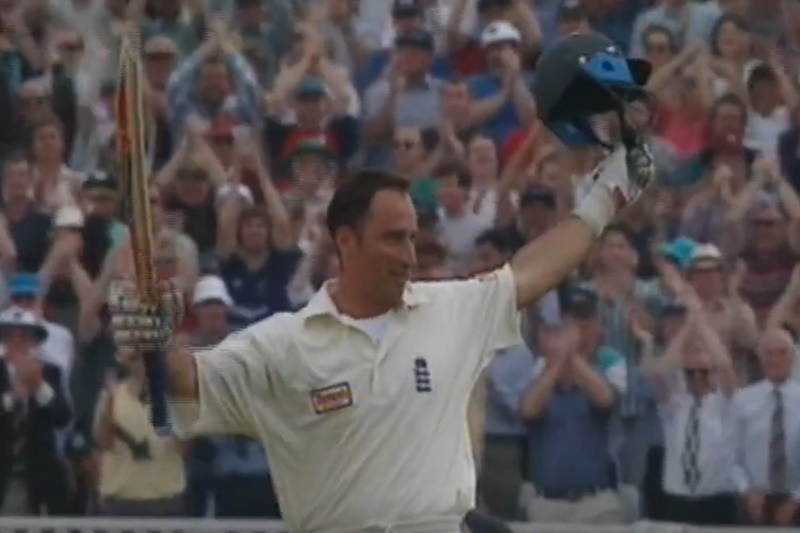
Those who have listened to the first episode of The Ridiculous Ashes – the podcast we do with Dan Liebke – will already know our feelings about this particular innings.
This was the situation: England had lost every single Ashes in the 90s, Australia had just been rolled for 118 and England were now 50-3. At this point, Nasser Hussain and Graham Thorpe put on a 288-run partnership.
What was especially remarkable about this one was that it somehow remained surprising long after it had happened. Is it possible to repeatedly feel surprised about something you know full well has actually happened? Apparently it is.
Hussain’s second-highest Test score was 155 and England batsmen didn’t make another double hundred until the next one on our list, five years later. England also continued to get thrashed in Ashes series for quite a few years afterwards.
All of this meant that every time they flashed up Hussain’s highest score in a TV graphic and highlighted the fact that it was made in an Ashes Test, we’d all have to try and come to terms with the reality of it all over again.
Even now, getting on for 25 years later, it is a hard one to wrap your head around.
Graham Thorpe 200* v New Zealand, Christchurch 2002
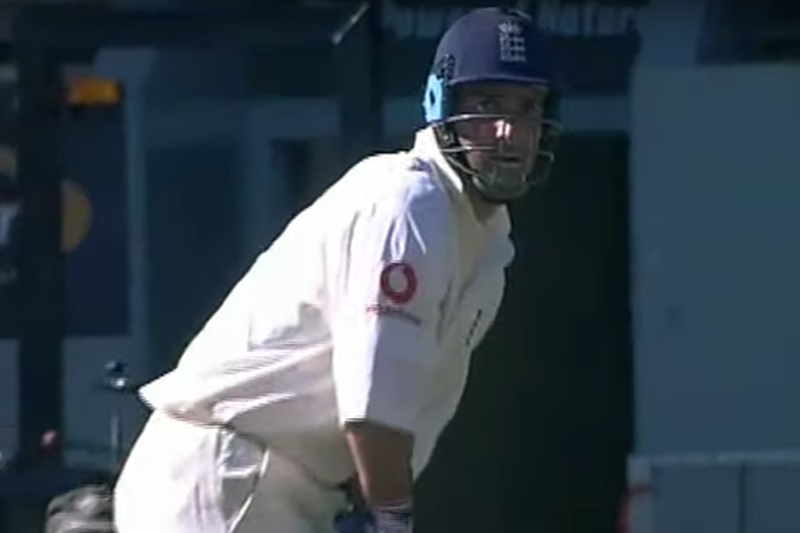
This Graham Thorpe innings is often overlooked because it wasn’t even close to being the most remarkable double hundred in the match.
England batted first and lost two wickets in the first over. While they ultimately recovered to 228 all out, New Zealand could only manage 147 in reply. England’s second innings then subsided to first 85-4 and then 106-5. And then Graham Thorpe hit what was at the time the third fastest Test double hundred off 231 balls.
As we’ve just said, it had been five years since an England batsman passed 200 and while Thorpe was England’s best batsman of the era, his was a reputation largely forged on gritty fifties. To give a bit more information in support of that, despite finishing his Test career with an average of 44.66, his second-highest score was only 138.
It was a really, really, highly surprising innings. People would probably talk about it a lot more if Nathan Astle hadn’t then tried to chase 550 on his own in a session.
Rob Key 221 v West Indies, Lord’s 2004
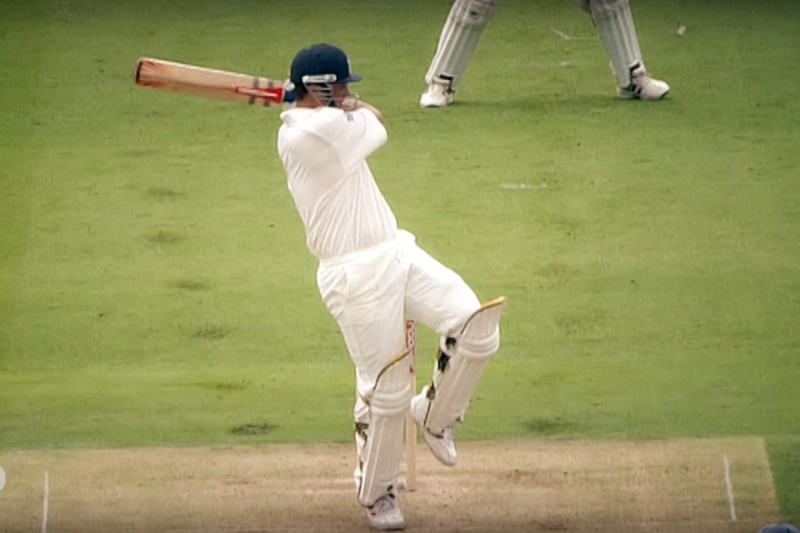
If King Cricket is anything, it’s a website that knows how to share a Rob Key picture with the world. The fact that this was an event that needed to occur was in large part due to events at Lord’s in 2004.
Key was a batsman who earned a modicum of Australian respect and a niche UK fanbase off the back of a couple of small but phlegmatic innings during the 2002/03 Ashes series. He only made one fifty in eight innings – plus what Wisden admiringly referred to as “a stout, mostly passive knock” in Perth after Nasser Hussain, Michael Vaughan and Alec Stewart had all been dismissed on the first morning – but it was the way he made those runs that won many of us over.
“He doesn’t give a shit about much and is real relaxed,” said Steve Waugh. “I like that in a bloke; it stops him getting overawed.”
In an era when England batsmen tended to default to quaking in Ashes matches, these were highly desirable characteristics. ‘If only he could make a few more runs,’ you thought to yourself.
Recalled to the side for the first Test against the Windies in 2004, Key still had only that one Test fifty to his name. We monitored the scorecard from a warehouse in North-West England, desperately hoping he’d make another.
He did. And then he turned it into a hundred. And then he turned it into a double hundred.
It was all rather satisfying.
Paul Collingwood 206 v Australia, Adelaide 2006

Like Thorpe’s, Paul Collingwood’s is a double hundred that doesn’t get talked about much – but for very different reasons. This is a shame because it was quite the moment.
One Australian newspaper had called Collingwood England’s worst-ever number four ahead of the Adelaide Test. This was not an isolated thing; it was symptomatic of sneering that extended to – in fact originated in – the UK.
There was a general sense that even though he was at that point averaging 41.77 in Test cricket, Collingwood wasn’t a proper batsman. A lot of people felt that he was actually just a rather fortunate utility cricketer who’d benefited from his willingness to carry drinks on tour.
So that was where Collingwood was. Now consider the state of the series.
Despite winning at home in 2005, England hadn’t won an Ashes in Australia since 1987. They hadn’t even competed really and after conceding a 445-run first innings deficit in the first Test, things didn’t exactly feel rosy ahead of the second.
At the end of day one, England’s worst-ever number four was on 98 not out. We stayed up to watch him make his hundred the next day and then we carried on staying up and watched him make 200. It was the first double hundred by an Englishman in Australia for 78 years.
We don’t ordinarily much care for landmarks, but there was an awful lot wrapped up in this one. The match famously didn’t pan out all that brilliantly for England in the end, but it was such a perfect moment that it almost lives in isolation.
The innings as a whole was so emphatic, and then the shot to reach 200 and the immediate reaction to it so perfect and pure, that we still feel all of the joy that we did at the time, garnished with all of that hugely misplaced optimism about what was to come.
Paul Collingwood was a cricketer you could invest in. This was one of the pay-offs.
Alastair Cook 235* v Australia, Brisbane 2010
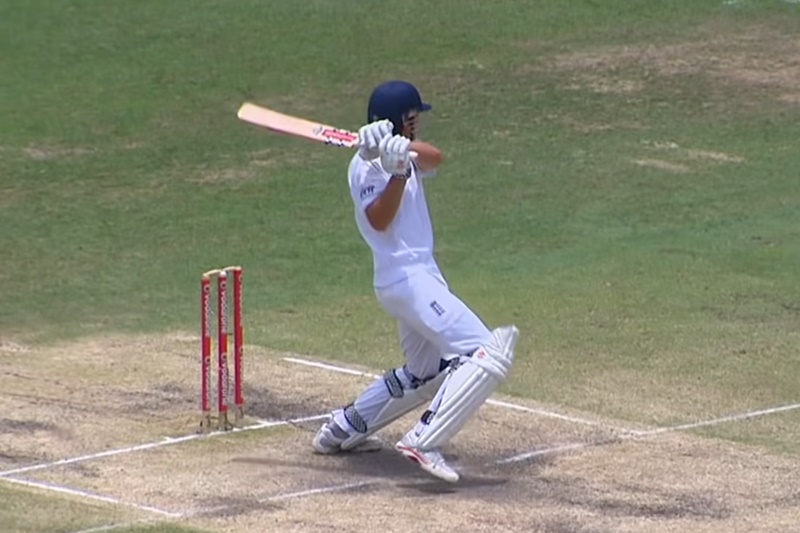
It was 2010 and England still hadn’t won another Ashes Down Under because that previous one had ended up 5-0.
Day one of the first Test at the Gabba. Andrew Strauss was out in the first over and then Peter Siddle took a frigging hat trick. On his birthday.
England were out for 260. Australia made 481. Same old, same old. We’d seen this one before.
But then suddenly, out of nowhere, England batted… and batted… and batted.
Andrew Strauss and Alastair Cook put on 188 for the first wicket, then Jonathan Trott came to the crease, and then… no further wickets fell.
The match ended with the tourists 517-1. Five hundred and seventeen for one!
Strauss’s 110 was the worst innings. Jonathan Trott finished on 135 not out, Cook on 235 not and the Earth was no longer on its axis.
Kevin Pietersen 227 v Australia, Adelaide 2010
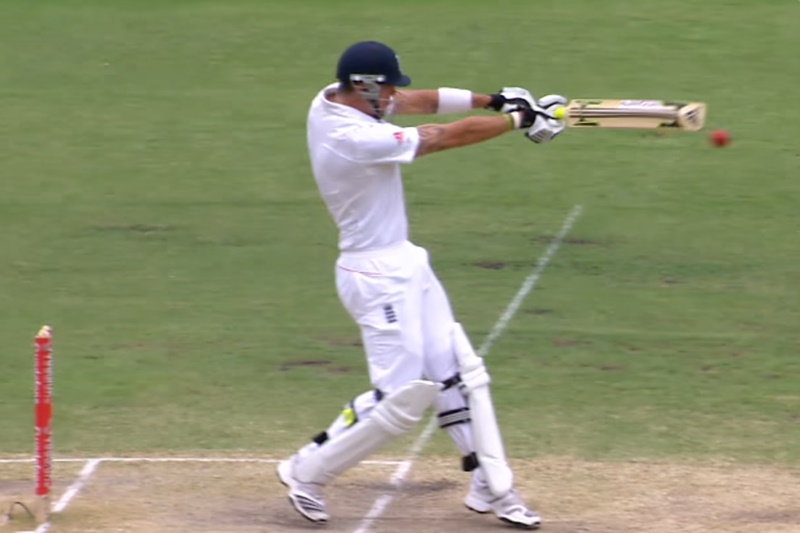
One of the features of this list is that mostly there are quite large gaps between entries… mostly.
Kevin Pietersen’s surprising double hundred came in the very next England innings after Alastair Cook’s surprising double hundred.
As we said at the time, England tours to Australia aren’t so much cricket as visits to a lab where a range of experiments are carried out to help the visitors identify every last one of their flaws. 2010/11 was the one recent exception and Pietersen’s double was when we started to comprehend that this might prove to be the case.
The 517-1 innings was so transcendentally weird it could only have been a complete outlier; a freak event that would never be repeated. So to then see another England double hundred exactly one innings later was almost as surprising.
Alastair Cook and Kevin Pietersen. ‘Creatures of their time’ we called them. Flat track bullies of entirely contrasting approaches.
The match panned out like this. James Anderson knocked out Australia’s top order and then Mike Hussey and Brad Haddin hustled the home side to 245. Testing pitch maybe? England made 620-5.
Cook made 148 and Pietersen – who hadn’t reached three figures in 18 months – made 227 in that particular and memorable way in which he made big hundreds.
Then Graeme Swann took a five-for and England had an innings victory. In Australia. The first of three in that series as it turned out.
Every time England reached 300 in this series, they also reached 500.
Bonkers.
Ben Stokes 258 v South Africa, Cape Town 2016
England made 312 runs in 38.5 overs while Ben Stokes was at the crease for this innings. No matter what you’ve seen from Stokes before or since, that surely counts as a surprising event. Writing at the time, we suggested that he had actually distorted time.
Stokes started at a decent lick and then accelerated – increasingly defensive field settings failing to slow him because they were offset by a Private Hudson level of demoralisation from South Africa. Even with a good number of men on the fence, Stokes was able to move from 150 to 250 in 61 balls.
The innings was so unearthly it actually left Sky commentator Nasser Hussain sombre with admiration because his brain simply didn’t know how to react.
Asked how the England team would be feeling afterwards, Ian Botham said they would be, “literally circling the moon”.
Responding to England’s innings, Hashim Amla batted for almost 12 hours and still didn’t get within 50 runs of what Stokes had achieved in five and a half. Stokes bowled 28 overs.
Zak Crawley 267 v Pakistan, Southampton 2020
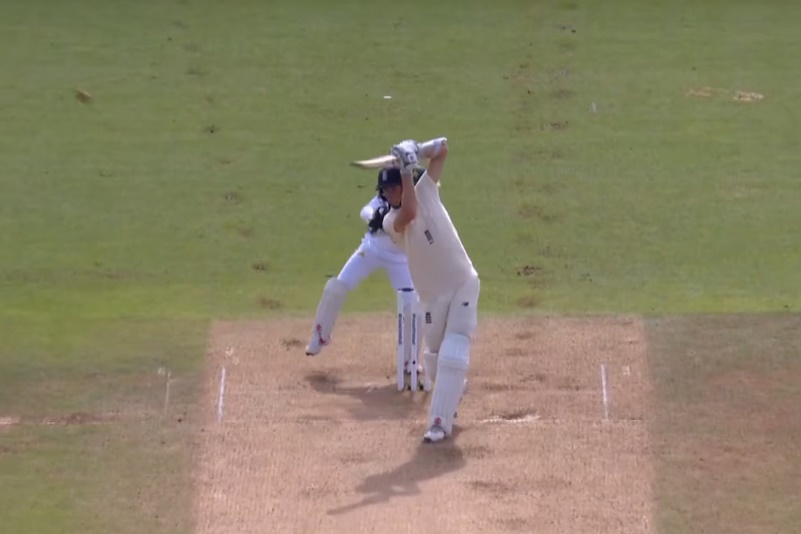
Zak Crawley went into this match with a Test average below 30 and a first-class only very marginally above it. He had made three red ball hundreds and none in Tests. He was up against a rather tidy Pakistan bowling attack.
Crawley promplty clipped his first ball for four and then made another 263 runs. He did this as England endured pace, swing, seam and wrist spin, having at one point subsided to 127-4.
The longer the innings went on, the less it felt like a surprise and the more it felt like everything Crawley had done previously was the surprise. At the time it seemed like a Westworld-esque journey inward, after which he’d realise who he really was. ‘Oh, right – turns out I’m the perfect top order batsman.’
Except it wasn’t that, because one dreamy fifty aside, it was followed by a run of complete failures, such that we’re probably now back to the double hundred being the surprise; a weird-arsed soaring peak from someone who can look for all the world like a natural, but who definitely isn’t.
If you enjoy King Cricket and you’d like to support us, please flip us a coin or buy us a pint each month via Patreon. Put simply, our patrons buy us the time to do features like this. If you’d also like to contribute, you can do so here. It’s a big help. Thanks.
You may also want to sign up to get our articles emailed to you. You can do that for free without becoming a patron.

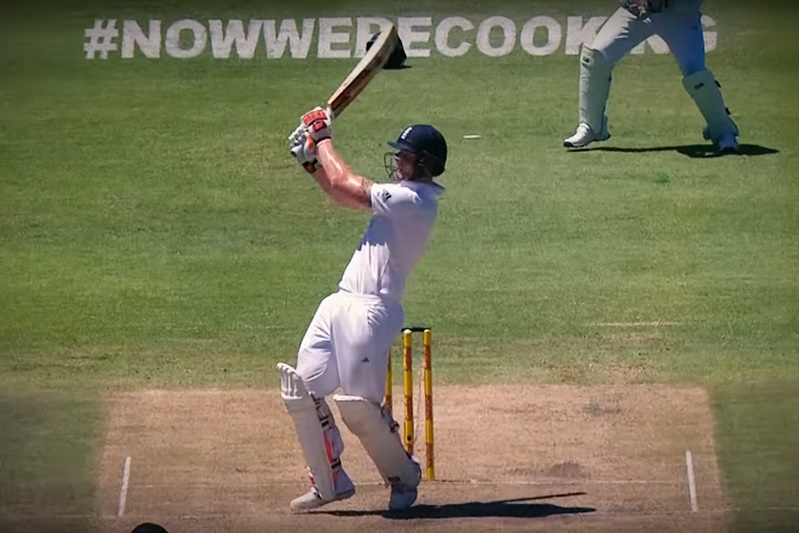

Fantastic feature as always. Speaking of Rob Key, the (so-called) ‘World’s Best Cricket Club’, with Simons Hughes and Mann, invites somebody from the world of cricket for a Zoom interview and quiz each Thursday. Tomorrow they’ve got Rob Key.
You have to be a member on Patreon or something to attend live, but the interview tends to appear on YouTube afterwards, if anyone wants to hear him try to guess what his second-highest Test high score is and how many wickets he took for Kent.
What I like about this article is that it sets up the reader to expect that Cook and Pietersen aren’t going to be on the list and then includes their first 2.
It sets up/labours the importance of context.
Fun read, KC, many thanks. It dredged up many a memory and also provided a different perspective on several of those events.
‘Is it possible to repeatedly feel surprised about something you know full well has actually happened?’
Yep. Having children.
Proper cricket’s back!
https://www.youtube.com/watch?v=nGNGH622vrk
As in returned.
A proper cricket’s back is winged.
Ridiculous cricket. Why are the pitches so flat? They would slaughter us if it was spinning. But the Indian administrators would probably rather see 330 plays 330 and risk their team losing.
Oh, we’re collapsing again. Of course.